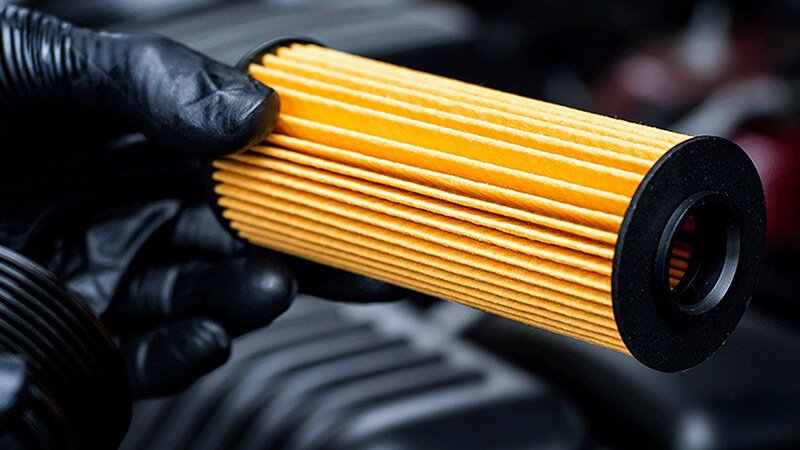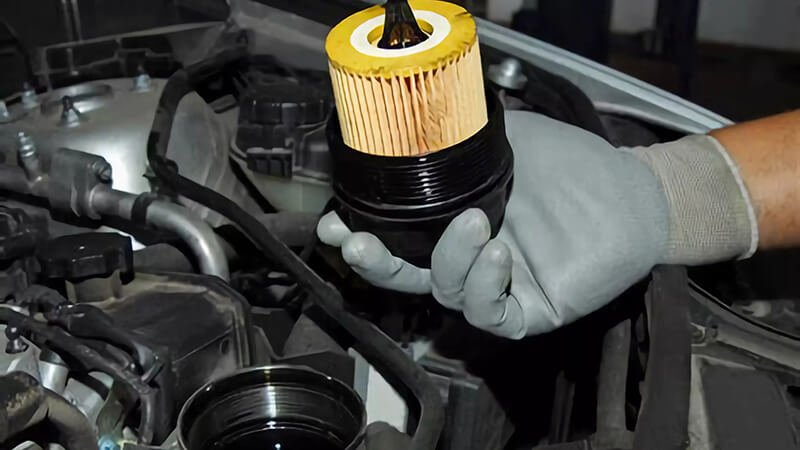Changing an oil filter looks easy. One twist and you feel done. Yet the wrong filter can drain pressure, grind bearings, and lock an engine. I have seen that sad tow-truck scene too many times.
No, a “one-size” filter is rarely safe. Threads, gaskets, bypass-valve settings, flow rates, and media all change with engine design, so cross-model swaps risk leaks, starvation, or sludge.
Most people never open a filter, so they miss the small parts that protect a big investment. Stay with me and I will break the myths, show the data, and share lessons I learned while building Runex Auto’s filter line.

Can all cars use the same oil filter?
A bargain “universal” filter promises less stock, fast service, happy margins. The ad sounds perfect when you manage a crowded parts room.
No. Engine families differ in thread pitch, gasket seat, filter volume, bypass-valve pressure, and anti-drain design. One canister cannot meet every spec without some trade-off that hurts reliability.
Why engine design blocks universality
1. Oil-pressure curve
Small three-cylinder engines idle at 10–15 psi. Turbo diesels idle near 30 psi and spike past 70 psi. A filter’s bypass valve1 must match that curve. Mismatch it, and either oil bypasses too soon or not at all.
2. Thread pitch and gasket seat2
Threads that differ by 0.5 mm feel “close” but strip under vibration. Gasket OD must seat on the machined pad; if it sits on a chamfer, it will leak after a heat cycle.
3. Media area and micron rating3
High-rev petrol engines shed fine carbon, so they need tight 20 µm media. Work-truck diesels shed soot clumps, so they need more area and higher dirt-holding. That forces a longer or wider shell.
| Engine Category | Typical Idle Pressure | Recommended Bypass Valve | Media Type | Shell Length |
|---|---|---|---|---|
| Sub-compact petrol | 12 psi | 8–11 psi | Cellulose 20 µm | 65 mm |
| Family SUV petrol | 25 psi | 12–15 psi | Blend 15 µm | 80 mm |
| Pickup diesel | 30 psi | 15–18 psi | Synthetic 10 µm | 100 mm |
| Sports car | 40 psi | ≥18 psi | Synthetic 8 µm | 70 mm |
I once watched a fleet operator fit sub-compact filters to light vans “because the thread matched.” Within months, cold-start knocks appeared. Oil starved until the high bypass popped. We restored model-specific filters and the noise vanished.

Is it okay to reuse the same oil filter?
Reusing feels thrifty: drain oil, top back up, spin the same filter. Less waste, less money—so what is wrong?
It is unsafe. Filters are single-use traps for grit and metal. A reused filter clogs, opens its bypass, and lets dirty oil recirculate. Rubber seals and paper media also fatigue after one heat cycle.
How a filter ages from clean to clogged
Contamination load
Every combustion cycle4 adds carbon, dust, and microscopic metal. The media packs up like a full trash bag.
Seal fatigue
Nitrile or silicone gaskets5 harden at >120 °C. Compression set causes weeping around the base plate.
Bypass fatigue
A steel spring loses tension after thousands of cycles. Eventually it stays open and defeats the filter’s purpose.
| Mileage Stage | Capture Efficiency | By-pass Activity | Engine Risk Level |
|---|---|---|---|
| New (0–500 mi) | 99 % | None | Low |
| Mid-life (1,500–3,000 mi) | 90 % | Rare pulses | Moderate |
| Near end (4,500 mi) | 80 % | Frequent | High |
| Reused (>5,000 mi) | <70 % | Constant | Severe |
When I cut apart a reused filter from a customer’s rally car, the pleats were collapsed and metal flakes lay on the outlet. Bearings had already scored. A ten-dollar part nearly ruined a ten-thousand-dollar engine. We now mandate fresh filters at every oil change.

Are oil filters compatible?
Two filters can share a thread size yet still harm the engine. Compatibility covers invisible details that a quick visual check misses.
True compatibility means matching internal valves, shell strength, burst pressure, and flow capacity—not just external fit. Filters with similar shells may react very differently under heat or high RPM.
Hidden specs that decide success
Anti-drain-back valve6
This silicone flap keeps oil in the gallery overnight. If the lip is too stiff, warm oil leaks back and causes dry starts.
Burst pressure7
Turbocharged engines spike oil pressure during cold revs. A shell rated for 200 psi may balloon at 150 psi if metal grade is thin.
Flow orifice size8
Diesels move twice the oil of small petrol motors. They need larger inlet holes. Choked flow raises differential pressure and forces early bypass.
| Spec Parameter | Typical Range | What Happens If Wrong |
|---|---|---|
| Anti-drain valve material | Nitrile / Silicone | Nitrile cracks in cold, causing startup rattle |
| Shell burst pressure | 150–250 psi | Too low → can bursts, oil loss |
| Inlet hole total area | 200–500 mm² | Too small → pressure drop, cam wear |
| Media collapse strength | >100 psi | Weak media folds, blocking passages |
Runex Auto tests each lot to ISO 4548-12 collapse and burst standards. We pulled samples from a low-cost supplier that skipped this step. Two of ten burst at 180 psi—below many turbo diesel cold-start peaks. We rejected the order and saved a distributor a recall.
How do I know if an oil filter will fit my car?
Standing in the parts aisle, filters look alike. So how can you choose the right one every time?
Use official cross-reference data, check thread and gasket size, and confirm bypass-valve pressure against the vehicle’s service manual. Never rely only on visual similarity.
Three quick checks
1. Manufacturer lookup9
Enter make, model, year, and engine code. The system returns the exact part. At Runex Auto we update this database monthly.
2. Spec sheet comparison10
If you must cross brands, match four numbers: thread, gasket OD, bypass pressure, and height. Two minutes saves an engine.
3. Bench test fit11
Spin the filter by hand. If it feels gritty or bottoms early, stop. Do not force. A smooth seven-turn engagement shows correct pitch.
| Verification Step | Tool Needed | Common Mistake | Fix |
|---|---|---|---|
| Database search | Phone/PC | Wrong engine code | Check VIN |
| Spec sheet read | Ignore bypass psi | Mark spec in red | |
| Dry mock fit | Hand | Over-tighten | Torque to 3/4 turn after contact |
When my UK client Joe tried a “visual match” during peak season, 30 filters leaked on cold starts. The thread pitch differed by a fraction. After switching to catalog-verified Runex parts, leak returns hit zero.

Conclusion
Oil filters12 may look simple, but inside they balance flow, pressure, and debris capture for a specific engine. Reusing or mixing filters risks leaks, starvation, and sudden breakdowns. Follow manufacturer data, respect bypass settings, and buy from proven suppliers. Your engine—and your reputation—depend on that careful choice.
-
Understanding the role of a bypass valve can help you ensure optimal engine performance and prevent issues like oil starvation. ↩
-
Learning about gasket seating can prevent leaks and enhance engine reliability, saving you from costly repairs. ↩
-
Exploring micron ratings will help you choose the right filter for your engine, ensuring better protection and efficiency. ↩
-
Understanding the effects of combustion cycles can help improve engine efficiency and longevity. Explore this link for detailed insights. ↩
-
Learn about the durability and limitations of these gaskets to ensure optimal engine sealing and performance. ↩
-
Understanding the function of an Anti-drain-back valve can help prevent dry starts and improve engine longevity. ↩
-
Learn about burst pressure to ensure your engine components can withstand high pressures and avoid failures. ↩
-
Discover how flow orifice size impacts oil flow and engine efficiency, crucial for optimal performance. ↩
-
Explore this link to find reliable manufacturer lookup tools that ensure you get the right auto parts every time. ↩
-
This resource will guide you on how to accurately compare spec sheets, preventing costly mistakes in auto part selection. ↩
-
Learn the best practices for bench testing to ensure proper fit and function of auto parts, avoiding potential issues. ↩
-
Know Runex' best auto oil filter, clicking this link to get your best product and price. ↩













